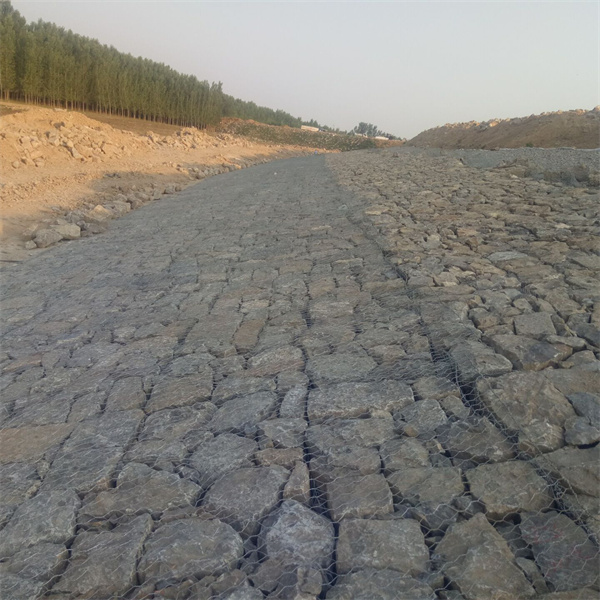nóv . 10, 2024 11:56 Back to list
Gabion Wall Construction Techniques and Design Considerations in China
Construction Details of Gabion Walls in China
Gabion walls are increasingly gaining popularity in various construction applications across China. These structures are composed of hexagonal wire mesh cages filled with rocks, stones, or other materials, making them an effective solution for erosion control, slope stabilization, and even decorative landscaping. Understanding the construction details of gabion walls is crucial for practitioners in the field, engineers, and landscape designers. This article will delve into the essential aspects of gabion wall construction in China.
Design Considerations
Before beginning construction, it is essential to consider the specific site conditions. The soil type, drainage patterns, and local climate can significantly influence the design of a gabion wall. In China, regions prone to heavy rainfall must account for water drainage to prevent hydrostatic pressure behind the wall, which could compromise its stability. Engineers often include weep holes or drainage pipes to facilitate water movement, mitigating the risk of water buildup.
Materials
The materials used in gabion wall construction are of paramount importance. The wire mesh is typically made from galvanized steel, which offers resistance against corrosion, extending the life of the wall. Depending on the specific requirements, plastic-coated wire mesh may also be used for additional protection. The stones or rocks used to fill the gabions should be durable and large enough to prevent movement within the cages. Common choices include granite, limestone, and river stones. The size of the stones generally ranges from 4 to 8 inches in diameter.
Construction Process
1. Site Preparation The first step in constructing a gabion wall is site clearing and leveling. This involves removing vegetation, rocks, and debris from the construction area. Adequate drainage must also be addressed at this stage to prevent future erosion.
2. Foundation Installation A stable foundation is critical for gabion walls. A trench is often dug to accommodate the base of the wall, ensuring that the first layer of gabions is level. The depth of the trench will depend on the height of the wall and local soil conditions.
china gabion wall construction details

3. Gabion Assembly The wire mesh cages are assembled on-site. This process begins with laying out the gabion baskets, which are typically pre-fabricated but may also be constructed from rolls of wire mesh. The edges are bent to form the crates, which are then fastened using wire ties. It is essential to ensure that the cages are securely tied and adequately shaped to prevent them from collapsing under weight.
4. Filling the Gabions Once the cages are in place, they are filled with rocks and stones. It is advisable to place larger stones at the bottom to create a stable base, with smaller stones filling in the gaps. The filling should be done lightly to avoid damaging the wire mesh and to allow for proper compaction.
5. Topping and Securing After filling, the top of the gabion should be covered with another layer of wire mesh to secure the contents. This additional layer prevents the stones from spilling out and helps maintain the structural integrity of the wall.
Maintenance
Gabion walls are generally low maintenance, but periodic inspections are recommended. Over time, vegetation may grow on the wall, requiring occasional trimming. Additionally, it is vital to check for any signs of displacement or erosion around the foundation, as these can indicate underlying issues that need to be addressed promptly.
Advantages of Gabion Walls
Gabion walls offer numerous benefits, particularly in the context of environmental sustainability. They blend well into natural landscapes, reducing visual impacts, and can be designed to support flora, enhancing biodiversity. Furthermore, they are cost-effective and can be constructed with local materials, minimizing transportation costs and carbon footprints.
Conclusion
In conclusion, gabion walls serve as a functional and aesthetic solution for a variety of construction challenges in China. By adhering to proper construction techniques and utilizing quality materials, builders can ensure the longevity and effectiveness of these versatile structures. As the demand for sustainable construction practices grows, gabion walls are poised to become an even more integral part of the landscape in China.
-
The Role of Galvanized Gabion Mesh in Riverbank Protection
NewsJun.26,2025
-
The Role of Gabion Basket Raised Bed in Sustainable Gardening
NewsJun.26,2025
-
Quality Assurance of Wire Mesh Gabion Baskets
NewsJun.26,2025
-
Installation Guide for Welded Gabion Box
NewsJun.26,2025
-
How to Choose the Right Gabion Box
NewsJun.26,2025
-
Different Types of Gabion Wire Mesh
NewsJun.26,2025
-
Why PVC Coated Gabion Mattress Is the Best Solution for Long-Term Erosion Control
NewsMay.23,2025






